First of all, a few important notes that you should definitely pay attention to.
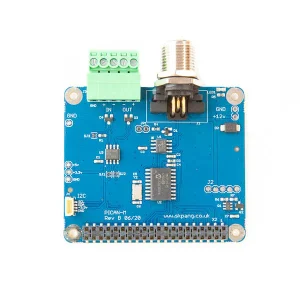
Fig. PiCAB-M board without SMPS (SK Pang)
PiCAN M is a small expansion board for the Raspberry Pi 3/4. This allows NMEA2000 and NMEA0183 buses to be connected to a Raspi. There is also a connector for the I2C bus to which I2C sensors can be connected. The PiCAN-M can be powered via an external 12V connection. A supply of the Raspi with the PiCAN-M board is optionally also possible via the NMEA2000 bus. There is extensive documentation on how the PiCAN-M can be integrated into OpenPlotter and SignalK. It is also shown how to operate an environmental sensor BME280 on the I2C bus. The board is from SK Pang electronics distributed through various distributors in several countries.
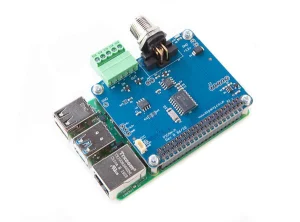
Fig.: PiCAN-M on Raspi 4B (SK Pang)
Table of contents
Technical specifications
- CAN bus chip MCP2515 (CANBoat compatible)
- NMEA2000 CAN connection (can0) via M12 connector
- NMEA0183 RS422 connection (ttyS0) via 5-pin screw terminal
- 120 ohm termination resistor
- Adjustable for NMEA2000 via jumper JP1
- Adjustable for NMEA0183 via solder bridge SJ4
- I2C via connector J4, 3.3V level
- LED display (GPIO22)
- Integrated DC/DC converter 3A for 12V supply (optionally also without)
- Integrated surge protection
- Supply also possible via NMEA2000 bus
- Compatible with OpenCPN, OpenPlotter, Signal K
- Metal case available
- Suitable for Raspberry Pi 3/4
Documents
- Circuit diagram
- Operating instructions (PDF English)
- Operating instructions (HTML German)
- User manual (HTML English)
- Instructions metal housing (HTML English)
Power supply
The PiCAN-M can be powered in three different ways.
- Via 5V power supply on the USB-C plug of the Raspi
- Via external feed of 12V at the PiCAN-M
- Powered by the NMEA2000 bus
For the first variant, no DC/DC converter (SMPS) is required on the PiCAN-M board. The last two variants require a 3A DC/DC converter on the board. SK Pang electronics offers two different boards. If you subsequently remove or solder a DC/DC converter, you lose the guarantee. Therefore it is advisable to buy the right PiCAN-M.

Fig .: PiCAN-M without SMPS
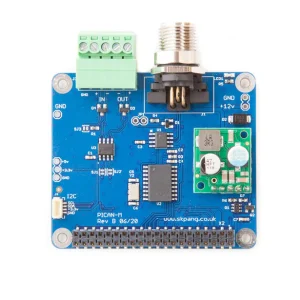
Fig .: PiCAN-M with SMPS
Danger! The PiCAN-M does not contain correct reverse polarity protection of the 12V supply voltage. For external operation at 12V, a 1A fuse must be inserted in the supply line.
The Raspi must not be supplied with 12V and 5V via the USB-C socket at the same time. Otherwise there will be a double feed with unforeseeable consequences.
If the PiCAN-M is connected to the NMEA2000 and is also supplied with 12V via the external input, it must be ensured that there is no double feed. In this case, there must be no other 12V feed source in the NMEA2000 bus, such as a plotter or feed cable. The additional external supply of 12V to the PiCAN-M is only permitted if the PiCAN-M takes over the sole 12V bus supply in the NMEA2000 bus. This can be the case, for example, if there are only sensors or simple display devices on the NMEA2000 bus.
Depending on the ambient temperature, active or passive cooling of the Raspi CPU may be necessary to prevent the processor from being clocked down. The compact design makes cooling more difficult. It may be necessary with cable adapters or one GPIO extension To create space for cooling between Raspi and PiCAB-M.
Occupied Raspi resources
- SPI MCP2515 (CAN bus)
- Pin24 CE0
- Pin23 SCLK
- Pin19 MOSI
- Pin21 MISO
- Pin22 INT (GPIO25)
- LED Pin15 (GPIO22) freely usable
- MAX3490 (RS422)
- Pin8 TX
- Pin10 RX
- I2C
- Pin5 SCL
- Pin3 SDA
Terminal assignment
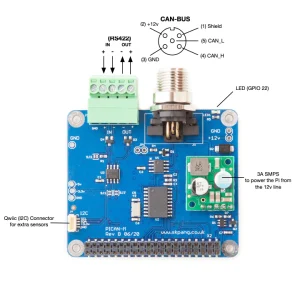
Fig.: Assignment (SK Pang)
pictures
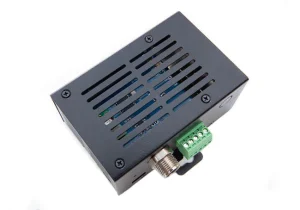
Fig.: Metal housing (SK Pang)
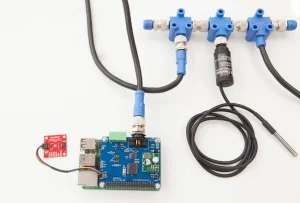
Fig.: NMEA2000 network with temperature sensor (SK Pang)
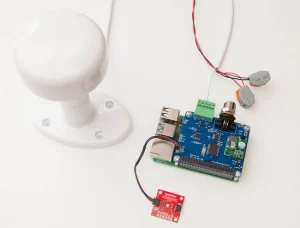
Fig.: NMEA0183 network with GPS sensor and I2C sensor BME280 (SK Pang)
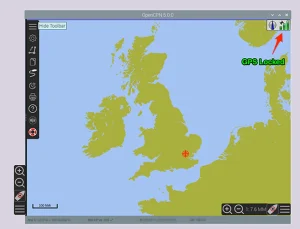
Fig.: GPS data in OpenCPN (SK Pang)
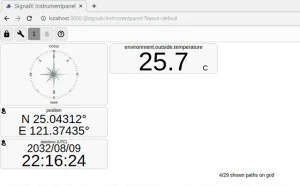
Fig.: Sensor data in SignalK (SK Pang)